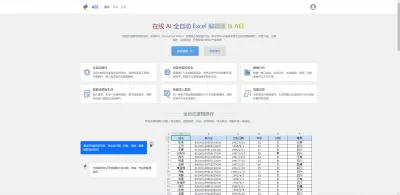EconML is a Python package for estimating heterogeneous treatment effects from observational data via machine learning. This package was designed and built as part of the ALICE project at Microsoft Research with the goal to combine state-of-the-art machine learning techniques with econometrics to bring automation to complex causal inference problems. The promise of EconML:
- Implement recent techniques in the literature at the intersection of econometrics and machine learning
- Maintain flexibility in modeling the effect heterogeneity (via techniques such as random forests, boosting, lasso and neural nets), while preserving the causal interpretation of the learned model and often offering valid confidence intervals
- Use a unified API
- Build on standard Python packages for Machine Learning and Data Analysis
One of the biggest promises of machine learning is to automate decision making in a multitude of domains. At the core of many data-driven personalized decision scenarios is the estimation of heterogeneous treatment effects: what is the causal effect of an intervention on an outcome of interest for a sample with a particular set of features? In a nutshell, this toolkit is designed to measure the causal effect of some treatment variable(s) T on an outcome
variable Y, controlling for a set of features X, W and how does that effect vary as a function of X. The methods implemented are applicable even with observational (non-experimental or historical) datasets. For the estimation results to have a causal interpretation, some methods assume no unobserved confounders (i.e. there is no unobserved variable not included in X, W that simultaneously has an effect on both T and Y), while others assume access to an instrument Z (i.e. an observed variable Z that has an effect on the treatment T but no direct effect on the outcome Y). Most methods provide confidence intervals and inference results.
For detailed information about the package, consult the documentation at https://econml.azurewebsites.net/.
For information on use cases and background material on causal inference and heterogeneous treatment effects see our webpage at https://www.microsoft.com/en-us/research/project/econml/
<details> <summary><strong><em>Table of Contents</em></strong></summary>- News
- Getting Started
- For Developers
- Blogs and Publications
- Citation
- Contributing and Feedback
- Community
- References
News
If you'd like to contribute to this project, see the Help Wanted section below.
July 3, 2024: Release v0.15.1, see release notes here
<details><summary>Previous releases</summary>February 12, 2024: Release v0.15.0, see release notes here
November 11, 2023: Release v0.15.0b1, see release notes here
May 19, 2023: Release v0.14.1, see release notes here
November 16, 2022: Release v0.14.0, see release notes here
June 17, 2022: Release v0.13.1, see release notes here
January 31, 2022: Release v0.13.0, see release notes here
August 13, 2021: Release v0.12.0, see release notes here
August 5, 2021: Release v0.12.0b6, see release notes here
August 3, 2021: Release v0.12.0b5, see release notes here
July 9, 2021: Release v0.12.0b4, see release notes here
June 25, 2021: Release v0.12.0b3, see release notes here
June 18, 2021: Release v0.12.0b2, see release notes here
June 7, 2021: Release v0.12.0b1, see release notes here
May 18, 2021: Release v0.11.1, see release notes here
May 8, 2021: Release v0.11.0, see release notes here
March 22, 2021: Release v0.10.0, see release notes here
March 11, 2021: Release v0.9.2, see release notes here
March 3, 2021: Release v0.9.1, see release notes here
February 20, 2021: Release v0.9.0, see release notes here
January 20, 2021: Release v0.9.0b1, see release notes here
November 20, 2020: Release v0.8.1, see release notes here
November 18, 2020: Release v0.8.0, see release notes here
September 4, 2020: Release v0.8.0b1, see release notes here
March 6, 2020: Release v0.7.0, see release notes here
February 18, 2020: Release v0.7.0b1, see release notes here
January 10, 2020: Release v0.6.1, see release notes here
December 6, 2019: Release v0.6, see release notes here
November 21, 2019: Release v0.5, see release notes here.
June 3, 2019: Release v0.4, see release notes here.
May 3, 2019: Release v0.3, see release notes here.
April 10, 2019: Release v0.2, see release notes here.
March 6, 2019: Release v0.1, welcome to have a try and provide feedback.
</details>Getting Started
Installation
Install the latest release from PyPI:
pip install econml
To install from source, see For Developers section below.
Usage Examples
Estimation Methods
<details> <summary>Double Machine Learning (aka RLearner) (click to expand)</summary>- Linear final stage
from econml.dml import LinearDML from sklearn.linear_model import LassoCV from econml.inference import BootstrapInference est = LinearDML(model_y=LassoCV(), model_t=LassoCV()) ### Estimate with OLS confidence intervals est.fit(Y, T, X=X, W=W) # W -> high-dimensional confounders, X -> features treatment_effects = est.effect(X_test) lb, ub = est.effect_interval(X_test, alpha=0.05) # OLS confidence intervals ### Estimate with bootstrap confidence intervals est.fit(Y, T, X=X, W=W, inference='bootstrap') # with default bootstrap parameters est.fit(Y, T, X=X, W=W, inference=BootstrapInference(n_bootstrap_samples=100)) # or customized lb, ub = est.effect_interval(X_test, alpha=0.05) # Bootstrap confidence intervals
- Sparse linear final stage
from econml.dml import SparseLinearDML from sklearn.linear_model import LassoCV est = SparseLinearDML(model_y=LassoCV(), model_t=LassoCV()) est.fit(Y, T, X=X, W=W) # X -> high dimensional features treatment_effects = est.effect(X_test) lb, ub = est.effect_interval(X_test, alpha=0.05) # Confidence intervals via debiased lasso
- Generic Machine Learning last stage
</details> <details> <summary>Dynamic Double Machine Learning (click to expand)</summary>from econml.dml import NonParamDML from sklearn.ensemble import RandomForestRegressor, RandomForestClassifier est = NonParamDML(model_y=RandomForestRegressor(), model_t=RandomForestClassifier(), model_final=RandomForestRegressor(), discrete_treatment=True) est.fit(Y, T, X=X, W=W) treatment_effects = est.effect(X_test)
</details> <details> <summary>Causal Forests (click to expand)</summary>from econml.panel.dml import DynamicDML # Use defaults est = DynamicDML() # Or specify hyperparameters est = DynamicDML(model_y=LassoCV(cv=3), model_t=LassoCV(cv=3), cv=3) est.fit(Y, T, X=X, W=None, groups=groups, inference="auto") # Effects treatment_effects = est.effect(X_test) # Confidence intervals lb, ub = est.effect_interval(X_test, alpha=0.05)
</details> <details> <summary>Orthogonal Random Forests (click to expand)</summary>from econml.dml import CausalForestDML from sklearn.linear_model import LassoCV # Use defaults est = CausalForestDML() # Or specify hyperparameters est = CausalForestDML(criterion='het', n_estimators=500, min_samples_leaf=10, max_depth=10, max_samples=0.5, discrete_treatment=False, model_t=LassoCV(), model_y=LassoCV()) est.fit(Y, T, X=X, W=W) treatment_effects = est.effect(X_test) # Confidence intervals via Bootstrap-of-Little-Bags for forests lb, ub = est.effect_interval(X_test, alpha=0.05)
</details> <details> <summary>Meta-Learners (click to expand)</summary>from econml.orf import DMLOrthoForest, DROrthoForest from econml.sklearn_extensions.linear_model import WeightedLasso, WeightedLassoCV # Use defaults est = DMLOrthoForest() est = DROrthoForest() # Or specify hyperparameters est = DMLOrthoForest(n_trees=500, min_leaf_size=10, max_depth=10, subsample_ratio=0.7, lambda_reg=0.01, discrete_treatment=False, model_T=WeightedLasso(alpha=0.01), model_Y=WeightedLasso(alpha=0.01), model_T_final=WeightedLassoCV(cv=3), model_Y_final=WeightedLassoCV(cv=3)) est.fit(Y, T, X=X, W=W) treatment_effects = est.effect(X_test) # Confidence intervals via Bootstrap-of-Little-Bags for forests lb, ub = est.effect_interval(X_test, alpha=0.05)
- XLearner
from econml.metalearners import XLearner from sklearn.ensemble import GradientBoostingClassifier, GradientBoostingRegressor est = XLearner(models=GradientBoostingRegressor(), propensity_model=GradientBoostingClassifier(), cate_models=GradientBoostingRegressor()) est.fit(Y, T, X=np.hstack([X, W])) treatment_effects = est.effect(np.hstack([X_test, W_test])) # Fit with bootstrap confidence interval construction enabled est.fit(Y, T, X=np.hstack([X, W]), inference='bootstrap') treatment_effects = est.effect(np.hstack([X_test, W_test])) lb, ub = est.effect_interval(np.hstack([X_test, W_test]), alpha=0.05) # Bootstrap CIs
- SLearner
from econml.metalearners import SLearner from sklearn.ensemble import GradientBoostingRegressor est = SLearner(overall_model=GradientBoostingRegressor()) est.fit(Y, T, X=np.hstack([X, W])) treatment_effects = est.effect(np.hstack([X_test, W_test]))
- TLearner
</details> <details> <summary>Doubly Robust Learners (click to expand) </summary>from econml.metalearners import TLearner from sklearn.ensemble import GradientBoostingRegressor est = TLearner(models=GradientBoostingRegressor()) est.fit(Y, T, X=np.hstack([X, W])) treatment_effects = est.effect(np.hstack([X_test, W_test]))
- Linear final stage
from econml.dr import LinearDRLearner from sklearn.ensemble import GradientBoostingRegressor, GradientBoostingClassifier est = LinearDRLearner(model_propensity=GradientBoostingClassifier(), model_regression=GradientBoostingRegressor()) est.fit(Y, T, X=X, W=W) treatment_effects = est.effect(X_test) lb, ub = est.effect_interval(X_test, alpha=0.05)
- Sparse linear final stage
from econml.dr import SparseLinearDRLearner from sklearn.ensemble import GradientBoostingRegressor, GradientBoostingClassifier est = SparseLinearDRLearner(model_propensity=GradientBoostingClassifier(), model_regression=GradientBoostingRegressor()) est.fit(Y, T, X=X, W=W) treatment_effects = est.effect(X_test) lb, ub = est.effect_interval(X_test, alpha=0.05)
- Nonparametric final stage
from econml.dr import ForestDRLearner from sklearn.ensemble import
编辑推荐精选


openai-agents-python
OpenAI Agents SDK,助力开发者便捷使用 OpenAI 相关功能。
openai-agents-python 是 OpenAI 推出的一款强大 Python SDK,它为开发者�提供了与 OpenAI 模型交互的高效工具,支持工具调用、结果处理、追踪等功能,涵盖多种应用场景,如研究助手、财务研究等,能显著提升开发效率,让开发者更轻松地利用 OpenAI 的技术优势。


Hunyuan3D-2
高分辨率纹理 3D 资产生成
Hunyuan3D-2 是腾讯开发的用于 3D 资产生成的强大工具,支持从文本描述、单张图片或多视角图片生成 3D 模型,具备快速形状生成能力,可生成带纹理的高质量 3D 模型,适用于多个领域,为 3D 创作提供了高效解决方案。


3FS
一个具备存储、管理和客户端操作等多种功能的分布式文件系统相关项目。
3FS 是一个功能强大的分布式文件系统项目,涵盖了存储引擎、元数据管理、客户端工具等多个模块。它支持多种文件操作,如创建文件和目录、设置布局等,同时具备高效的事件循环、节点选择和协程池管理等特性。适用于需要大规模数据存储和管理的场景,能够提高系统的性能和可靠性,是分布式存储领域的优质解决方案。


TRELLIS
用于可扩展和多功能 3D 生成的结构化 3D 潜在表示
TRELLIS 是一个专注于 3D 生成的项目,它利用结构化 3D 潜在表示技术,实现了可扩展且多功能的 3D 生成。项目提供了多种 3D 生成的方法和工具,包括文本到 3D、图像到 3D 等,并且支持多种输出格式,如 3D 高斯、辐射场和网格等。通过 TRELLIS,用户可以根据文本描述或图像输入快速生成高质量的 3D 资产,适用于游戏开发、动画制作、虚拟现实等多个领域。


ai-agents-for-beginners
10 节课教你开启构建 AI 代理所需的一切知识
AI Agents for Beginners 是一个专为初学者打造的课程项目,提供 10 节课程,涵盖构建 AI 代理的必备知识,支持多种语言,包含规划设计、工具使用、多代理等丰富内容,助您快速入门 AI 代理领域。


AEE
AI Excel全自动制表工具
AEE 在线 AI 全自动 Excel 编辑器,提供智能录入、自动公式、数据整理、图表生成等功能,高效处理 Excel 任务,提升办公效率。支持自动高亮数据、批量计算、不规则数据录入,适用于企业、教育、金融等多场景。


UI-TARS-desktop
基于 UI-TARS 视觉语言模型的桌面应用,可通过自然语言控制计算机进行多模态操作。
UI-TARS-desktop 是一款功能强大的桌面应用,基于 UI-TARS(视觉语言模型)构建。它具备自然语言控制、截图与视觉识别、精确的鼠标键盘控制等功能,支持跨平台使用(Windows/MacOS),能提供实时反馈和状态显示,且数据完全本地处理,保障隐私安全。该应用集成了多种大语言模型和搜索方式,还可进行文件系统操作。适用于需要智能交互和自动化任务的场景,如信息检索、文件管理等。其提供了详细的文档,包括快速启动、部署、贡献指南和 SDK 使用说明等,方便开发者使用和扩展。


Wan2.1
开源且先进的大规模视频生成模型项目
Wan2.1 是一个开源且先进的大规模视频生成模型项目,支持文本到图像、文本到视频、图像到视频等多种生成任务。它具备丰富的配置选项,可调整分辨率、扩散步数等参数,还能对提示词进行增强。使用了多种先进技术和工具,在视频和图像生成领域具有广泛应用前景,适合研究人员和开发者使用。


爱图表
全流程 AI 驱动的数据可视化工具,助力用户轻松创作高颜值图表
爱图表(aitubiao.com)就是AI图表,是由镝数科技推出的一款创新型智能数据可视化平台,专注于为用户提供便捷的图表生成、数据分析和报告撰写服务。爱图表是中国首个在图表场景接入DeepSeek的产品。通过接入前沿的DeepSeek系列AI模型,爱图表结合强大的数据处理能力与智能化功能,致力于帮助职场人士高效处理和表达数据,提升工作效率和报告质量。


Qwen2.5-VL
一款强大的视觉语言模型,支持图像和视频输入
Qwen2.5-VL 是一款强大的视觉语言模型,支持图像和视频输入,可用于多种场景,如商品特点总结、图像文字识别等。项目提供了 OpenAI API 服务、Web UI 示例等部署方式,还包含了视觉处理工具,有助于开发者快速集成和使用,提升工作效率。
推荐工具精选
AI云服务特惠
懂AI专属折扣关注微信公众号
最新AI工具、AI资讯
独家AI资源、AI项目落地

微信扫一扫关注公众号











